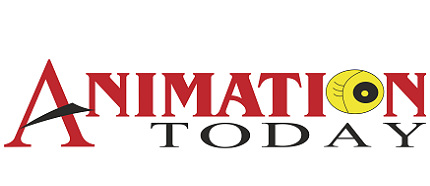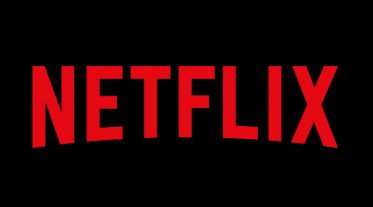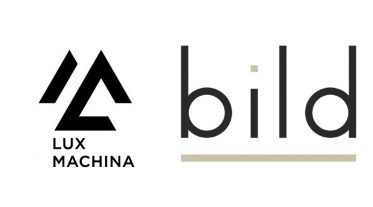Fuelled by a convergence of economic need and technical possibility, more and more studios are releasing animated and live-action feature films in stereoscopic 3D (S3D) format.
Stereoscopy, or stereoscopic imagery, uses the characteristics of human binocular vision to create the illusion of depth, making objects appear to be in front of or behind the cinema screen. The technique relies on presenting the right and left eyes with two slightly different images which the brain automatically blends into a single view. Subtle rightleft dissimilarities in the images create the perception of depth and can be manipulated to creative advantage. Therein lies the art of stereoscopic filmmaking.
The Business Cases
It is clear that S3D productions have a strong potential to generate revenue and invigorate the box office. Both attendance rates and average ticket prices tend to be higher for 3D screenings. On average animated movies such as Meet the Robinsons earn two to three times the box-office receipts – per screen and per theatre – if shown in S3D.
There are additional benefits to production companies and distributors. With HDTV and surround sound in an increasing number of homes (25% in the US ) S3D is a means of drawing audiences away from home and back into the movie theatre. A recent report by Screen Digest indicates that, based on past releases, an exhibitor can expect to make additional revenue of about US$10,000 per S3D movie release and could expect to generate a profit by the third release.
While as yet there are not enough S3D films being released to solidify the S3D business and not enough theaters to support wide or simultaneous releases, this scenario is rapidly changing. Not only is S3D production piggybacking the adoption of digitalcinema projection technologies, S3D’s momentum is helping those same display technologies to proliferate across an increasing number of theaters.
Aiding this phenomenon is the fact that stereoscopic projection technology is only marginally more expensive than standard digital projection systems. Likewise, the fact that more film studios are planning stereo versions of their upcoming releases is encouraging theatres to adopt the new stereoscopic projection technology.
New, affordably priced stereo camera rigs and other tools are also being developed that will make S3D production accessible to independent producers on limited budgets. At the present time, however, most S3D productions are simply stereo versions of computer graphics (CG) animated movies because, of course, the medium lends itself naturally to the creation of compelling stereo effects. However, the number of planned live-action stereo projects is significant and shows the support studios have for the format. Some of the live-action S3D features in production include Avatar, Horrorween, and a remake of The Stewardess (Stewardesses 4D).
Studios like Disney are showing a particularly strong interest in the S3D format. Not only has Disney made the largest number of S3D animated projects to date, the company is investigating the possibility of producing films in S3D natively. Recently, Disney shot, produced, and released Hannah Montana/Miley Cyrus: Best of Both Worlds Concert Tour exclusively in S3D. The Hannah Montana film was released on Superbowl weekend and, despite the curious timing, averaged a perscreen gross of over US$45,000. However another S3D film released that same weekend, U2 3D, did not fare as well. The limited number of available S3Dcapable theatres, and competition with Hannah Montana for those theatres, meant that the film failed to yield expected results.
There were an estimated 20 S3D projects in the works at the time this whitepaper was written, including Avatar (James Cameron), Battle Angel (James Cameron), Monsters vs Aliens (DreamWorks), and Tintin (three films by Peter Jackson and Steven Spielberg). Filmmakers have obviously discovered that using depth as part of the storytelling process – from design to development through production – gives them the opportunity to develop an entirely new creative experience.
CG Movies Created Natively in S3D CG animated features are the natural place for S3D production to develop, given the total control over the camera, environments, acting, etc. Many recent S3D projects have been full-CG movies: Chicken Little, Meet the Robinsons, Shrek 4D, Monster vs Aliens, Fly Me to the Moon, to name a few. Because of these successes, many associate S3D with animated features, however recent advancements in S3D live action have enabled other kinds of production.
Live Action Movies Shot in Stereo
Previously, live-action movies were shot with a single camera and the S3D segments added using postproduction techniques, e.g Superman Returns, Harry Potter and the Order of the Phoenix, The Polar Express and Monster House. However, with the advent of portable and flexible S3D cameras manufactured by Vince Pace and others, there have been live-action features shot and released in stereo (most notably Journey to the Center of the Earth 3D), with others coming soon. Additionally, there have been some very interesting developments around using S3D to shoot live events, as evidenced by Hanna Montana and U2 3D.
Sports broadcasting to theatres seem to be an area where S3D is gaining wide acceptance judging by the BBC’s live rugby broadcast in S3D and the numerous trials across the globe for almost every sport. The 2007 NBA All Stars game was shot and broadcast live over a closed-circuit system to rave reviews and the BBC has also unveiled plans to cover both the 2008 Summer Olympics in Beijing and the upcoming soccer World Cup in South Africa in S3D, and then display them in theaters.
Stereoscopic Transformation of Flat Movies
This process has been very extensively and uccessfully applied to many movies and accounts for the largest number of projects released thus far. The Polar Express, Robert Zemeckis’ feature-length CG film was completely re-rendered for stereo display a few months before its 2D opening. The reworking included some stereoscopic layout to accommodate the wider field of view of IMAX® screens. Other 2D conversions to S3D include Monster House and Beowulf (although director Robert Zemeckis knew from the outset he was going to produce a stereo version). Other early high-profile liveaction 2D feature films released with segments converted to S3D include Superman Returns and Harry Potter and the Order of the Phoenix: though these films are considered to have been less technically successful as they exhibited problems such as ghosting and parallax values that caused viewers physical discomfort.
State of the Industry: Standards
Today, there are no published standards for S3D though there are some recommendations. The Digital Cinema Initiatives (DCI), a joint venture between the major studios Disney, Fox, Paramount, Sony Pictures Entertainment, Universal and Warner Bros . Studios , has developed technical recommendations for both digital cinema and S3D cinema. In 2007 they published a short document defining high-level technical requirements for the mastering, distribution and theatrical playback of stereoscopic digital cinema content. The DCI is working on integrating their S3D recommendation into their Digital Cinema System Specification . The Society of Motion Picture and Television Engineers (SMPTE), an independent industry standards organization, also created the DC28-40 working group to establish published standards for S3D in conjunction with the studios (DCI), exhibitors and technology providers. The expectation is that they will arrive at a recommendation by the end of 2008. SMPTE also recently established a Task Force to define parameters of S3D mastering standard for home display. This activity will set the ground for future standardization efforts and provide a solid foundation for the efforts of several companies which have already developed a range of different products designed for home consumption of S3D content.
The Technical Challenges
For S3D cinema to be successful the viewer experience must be compelling. Technical problems can cause fatigue and eyestrain, and reduce the overall 3D experience to the point where the viewer prefers to see the planar version. The human eye has very little tolerance for discrepancies in color, geometry, and brightness between the left and right eye images and it is essential that they be identical in every way except for the horizontal parallax differences that create the 3D effect.
Today, most of the technical challenges of displaying S3D have been solved by digital cinema technologies and single-projector systems. Digital cinema has eliminated the film projection glitches – such as out of sync projection, and scratched and damaged frames – that plagued 3D cinema viewers in the past; and single projector systems have eliminated problems due to differences in lamp intensity and image alignment. Display challenges that remain revolve around the following:
The following is a list of other common issues that any person involved in S3D content creation should be aware of.
Pre-Production
Stereoscopic pre-production requires a depth script created by a stereographer to accompany the storyboards. The depth script acts as an invaluable tool for visualization, making decisions about each scene’s stereo depth, and as a tool to communicate the creative intent. The use of the depth script to set the stage and frame the scenes is very helpful in generating comfortable and readable stereo images, shots, and sequences.
Production: CG
Artists working on a stereo production require workstations that are stereo-enabled in order to accurately visualize their work. That said, artists might not wish to always see stereo. In the same way audio mixing over long stretches of time results in aural fatigue, looking at stereoscopic images day-in, day-out can cause eyestrain and fatigue. Making critical visual decisions is best handled when the eyes are rested. This is especially true given that decisions made in any one phase of production have an impact on every subsequent phase. Effective stereo pipelines take this into consideration across the entire workflow.
Production: Live Action
Since physical-world filming is bound by physical limitations, live-action projects have to deal with issues stemming from the fact that no two cameras are exactly alike. In liveaction S3D productions, the slightest inconsistencies in alignment, distortions and aberrations from lenses, zoom breathing, lens flare, and spherical reflections can produce discomfort or break the stereo illusion of depth.





